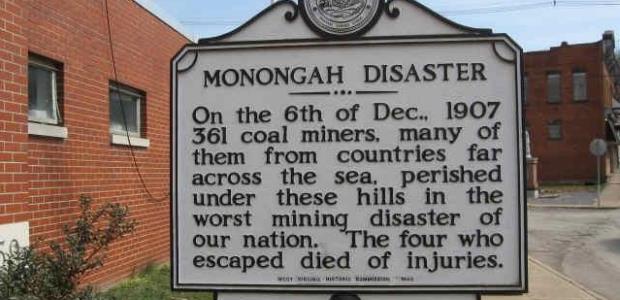
NIOSH Director Marks Miner's Day
The day was established in 2009, with Dec. 6 chosen for the Monongah, W.Va., mining disaster, the worst loss of life in a single day in the history of U.S. mining: At least 362 coal miners died in the explosion on Dec. 6, 1907.
NIOSH Director Dr. John Howard marked this year's Miner's Day, Dec. 6, in his "From the Director's Desk" message for December, reminding readers that this is an appropriate moment "to reflect on the men and women who work in this difficult, often dangerous, and highly skilled industry, as well as on what mining provides our society and how we can help protect miners on the job."
Mining remains the second-most-hazardous line of work, behind the category of commercial fishing, farming, and logging, and just above the industries of commercial transportation and construction, Howard wrote, citing BLS data. "However, because much of mining takes place well removed from public view, the degree to which the public interacts with—or is even aware of—this industry is minimal, and many may not always realize what this industry provides for us. We can easily remember seeing a new building being constructed or enjoying a train ride, but what we may not see is where our most fundamental resources come from. Mining typically happens far from population centers, snaking through miles of underground tunnels in the dark recesses of the earth to obtain coal, stone, and minerals. Or perhaps it’s a surface mine extracting clay or sand or metals from hardened ground. No matter the setting, the brave men and women who do this work face numerous hazards—noise, dust, shifting geology, huge pieces of moving equipment—that both enable and encumber their work and can endanger their lives."
The day was established in 2009, with Dec. 6 chosen for the Monongah, W.Va., mining disaster, the worst loss of life in a single day in the history of U.S. mining: At least 362 coal miners died in the explosion on Dec. 6, 1907. Three years later, Congress created the Bureau of Mines, which became today's NIOSH Mining Program, to research ways to make miners' jobs safer.
Howard's message notes a number of achievements from NIOSH researchers, including:
- a drill bit isolator to limit hazardous noise from roof bolting machines
- intelligent proximity detection systems to keep miners safe around moving equipment
- cap lamp designs that are brighter and more custom-built to light a worker’s specific task area
- ErgoMine, an Android app to audit work spaces for potential ergonomic improvements in mining
- a stand-alone mobile air scrubber to pull hazardous coal dust out of the air
- many improvements for keeping dust out of enclosed cabs, both above and below ground
- S-Pillar, a software program to help design stable pillars in stone mines
- a continuous personal dust monitor to empower coal miners with real-time information about coal dust exposure
"Although the mining industry has come a long way since the Monongah disaster, the challenges modern-day miners face are still many, and the risks are ever-present," Howard wrote. "Therefore, for as long as mining exists, NIOSH researchers will strive to prevent injuries and illnesses and to ensure that all miners can go home to their families at shift's end. See our website to learn more about these technologies and other NIOSH mining-related research."